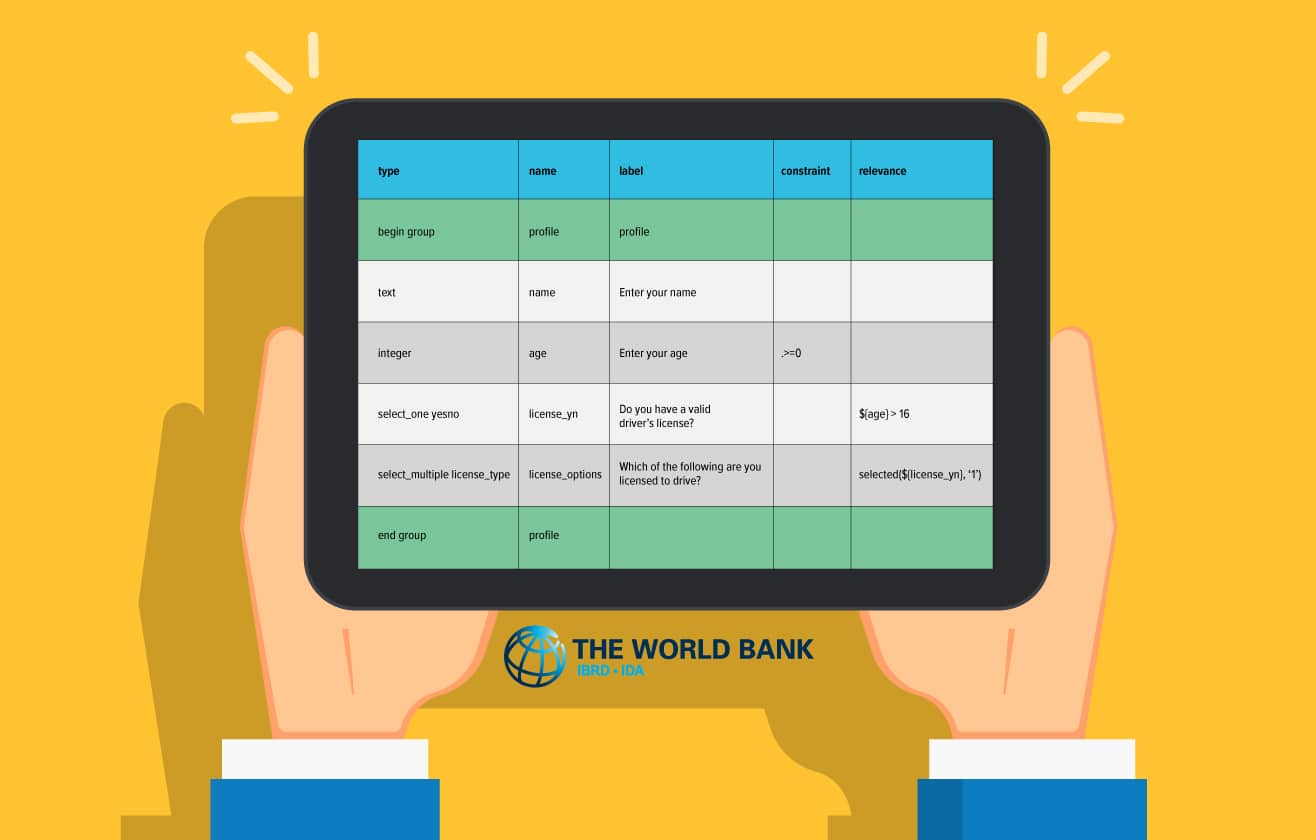Guest Authors:
- Avnish Dayal Singh, Consultant and Research Assistant
- Maria Ruth Jones, Senior Economist
- Roshni Khincha, Impact Evaluation Analyst
First look at DIME Analytics’ SurveyCTO Style Guide
The World Bank’s Development Impact (DIME) department generates high-quality and operationally relevant data and research to transform development policy, help reduce extreme poverty, and secure shared prosperity. DIME Analytics takes advantage of the concentration and scale of research at DIME to identify constraints and inefficiencies in the research production cycle and develop and iteratively test solutions. Resources developed and tested in DIME are then converted into public goods for the global research community, in the form of open-access trainings and open-source tools. In this blog post, DIME Analytics introduces one of their newest resources: a style guide to help SurveyCTO users with stylistic conventions for form design.
Why do we need Style Guides?
Over the last decade, development research has seen an increasing emphasis on collecting and working with primary data, that is, data collected directly by the research team through surveys. Consequently, research teams spend a significant amount of time creating surveys from scratch, which makes it difficult to collaborate easily on survey design and share across research teams from different organizations. Just as standardized style guides in programming languages like Stata and R have allowed researchers across organizations to collaborate and share guidelines on commonly encountered tasks, a similar set of conventions for programming surveys using SurveyCTO (and other ODK platforms) could help create meaningful efficiency gains in the quest to achieve high-quality, credible development research. While most ODK-based platforms provide “point-and-click” methods for programming surveys, XLSForms (Excel files used for designing questionnaires) are the preferred method, especially for highly complex questionnaires with multiple modules and hundreds of questions. This necessitates a resource that provides both beginner and advanced programmers with clear guidelines for programming XLSForms.
What is the SurveyCTO Style Guide?
Enter the DIME Analytics SurveyCTO Style Guide, and the accompanying DIME XLSForm template. The World Bank’s DIME department has programmed over 300 surveys in the last 8 years, and we have used those experiences to develop a standard coding style for electronic surveys. By applying the recommendations listed in the SurveyCTO Style Guide, readers will learn to create survey forms that are easy to understand and collaborate on, and the accompanying XLSForm template offers a “plug-and-play” approach that helps readers clearly distinguish “good” and “bad” practices. In order to make the guide easier to follow, we have divided it into three distinct aspects of programming an electronic survey:
- Design and development, which deals with ease of reading an XLSForm during the design stage.
- User interface, which describes setting up XLSForm programming with the aim of improving user experience when answering the survey.
- Exported form dataset, which deals with setting up XLSForm programming in a way that supports more efficient ways of working with the exported data.
How to use the style guide
Each of these categories is then split further into distinct recommendations, supported by examples from the XLSForm template to highlight “good” and “bad” practices. One such recommendation deals with the strategic use of white spaces to make XLSForms easier to read, as white spaces can be used to signal that the subject of the survey has moved on to another module/group of questions. Organizing the XLSForm in this way makes it much easier to navigate, and keep track of different modules/sections in a form. This is highlighted with the following images for comparison, drawn from the DIME XLSForm Template.

Another example in the guide recommends naming both begin_ and end_ fields in XLSForms. While ODK does not require naming of end_ fields, we recommend doing so to make it easier to match begin_ and end_ fields when there are multiple groups in a questionnaire. This is particularly relevant as SurveyCTO will not allow uploading of forms where begin_ and end_ fields don’t match. In this regard, a Stata command developed by DIME Analytics, ietestform, also ensures that the names of all begin_ and end_ fields in an XLSForm match. We highlight the importance of this in the Style Guide with the help of the following images for side-by-side comparison.

Next steps and feedback
The SurveyCTO Style Guide has been recently created, as part of an upcoming resource, iesurveykit, a DIME toolkit currently under development which further covers crucial aspects of high-quality data collection. Therefore, we welcome feedback and suggestions from the broader community on whether there are any additional practices that should be included, alternative ways of dealing with the issues highlighted in the Style Guide, and whether the guide is easy to follow for users new to programming SurveyCTO XLSForms. You can share your thoughts on the Style Guide and the XLS Template using this short survey, which will help us iterate on this pilot version of the style guide for future releases.
Did you find this resource helpful? For more from the World Bank’s iesurveykit, check out their webinar on high-frequency check dashboards.




